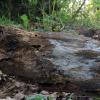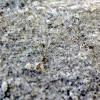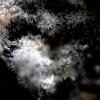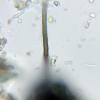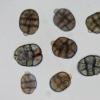
30-12-2025 16:44
Pascal DucosBonjour,Une anamorphe rose stipitée, très nombre

30-12-2025 17:14
 Bernard CLESSE
Bernard CLESSE
Bonjour à toutes et tous,Pourriez-vous aider Albe

29-12-2025 10:15
Hulda Caroline HolteHello, I found and collected this propoloid ascom

30-12-2025 09:04
Hello.A Pyrenomycete sprouting sparsely but very d

29-12-2025 17:44
Isabelle CharissouBonjour,J'aimerais savoir si d'autres personnes au

12-11-2021 00:03
Lepista ZacariasHi everybody,A week ago in my fiels trip I noticed

29-12-2025 17:12
 Bernard CLESSE
Bernard CLESSE
Bonjour à toutes et tous,Pourriez-vous m'aider à
Help with an anamorph
Josep Torres,
16-06-2024 14:36
An anamorph located in nature, on the surface of a trunk stripped of bark from the planifolio soil, near a river bed.
Conidiogenous hyphae strongly pigmented brown, somewhat more hyaline at the apex, with 5 to 7 septa, just over 0.1 mm. which produce brown, turtle-shaped conidia, mostly with 8 to 9 cells, with a more hyaline protuberance at one end, which is where it comes off.
These conidia with measurements of:
(18.9) 21 - 26.8 (28.5) × (15.8) 16.6 - 22 (24.5) µm
Q = (1) 1.1 - 1.4 (1.5) ; N = 30
Me = 23.9 × 19.4 µm; Qe = 1.2
Any suggestion from you will be well received.
Thank you very much in advance.
Kind regards.
Josep Torres,
22-06-2024 17:03
Re : Help with an anamorph
Alguna sugerencia.......................................
Franz Berger,
24-06-2024 21:28

Re : Help with an anamorph
Dear Josep,
Looks somewhat related to Acrodictys (see Seifert et al. 2011).
Conidia smooth or with ornamention?
No experience with such difficulkt stuff.
Best
Franz
Looks somewhat related to Acrodictys (see Seifert et al. 2011).
Conidia smooth or with ornamention?
No experience with such difficulkt stuff.
Best
Franz
Franz Berger,
24-06-2024 21:28

Re : Help with an anamorph
Dear Josep,
Looks somewhat related to Acrodictys (see Seifert et al. 2011).
Conidia smooth or with ornamention?
No experience with such difficulkt stuff.
Best
Franz
Looks somewhat related to Acrodictys (see Seifert et al. 2011).
Conidia smooth or with ornamention?
No experience with such difficulkt stuff.
Best
Franz
Franz Berger,
24-06-2024 21:29

Re : Help with an anamorph
Dear Josep,
Looks somewhat related to Acrodictys (see Seifert et al. 2011).
Conidia smooth or with ornamention?
No experience with such difficulkt stuff.
Best
Franz
Looks somewhat related to Acrodictys (see Seifert et al. 2011).
Conidia smooth or with ornamention?
No experience with such difficulkt stuff.
Best
Franz
Franz Berger,
24-06-2024 21:29

Re : Help with an anamorph
Dear Josep,
Looks somewhat related to Acrodictys (see Seifert et al. 2011).
Conidia smooth or with ornamention?
No experience with such difficulkt stuff.
Best
Franz
Looks somewhat related to Acrodictys (see Seifert et al. 2011).
Conidia smooth or with ornamention?
No experience with such difficulkt stuff.
Best
Franz
Franz Berger,
24-06-2024 21:29

Re : Help with an anamorph
Dear Josep,
Looks somewhat related to Acrodictys (see Seifert et al. 2011).
Conidia smooth or with ornamention?
No experience with such difficulkt stuff.
Best
Franz
Looks somewhat related to Acrodictys (see Seifert et al. 2011).
Conidia smooth or with ornamention?
No experience with such difficulkt stuff.
Best
Franz
Franz Berger,
24-06-2024 21:29

Re : Help with an anamorph
Dear Josep,
Looks somewhat related to Acrodictys (see Seifert et al. 2011).
Conidia smooth or with ornamention?
No experience with such difficulkt stuff.
Best
Franz
Looks somewhat related to Acrodictys (see Seifert et al. 2011).
Conidia smooth or with ornamention?
No experience with such difficulkt stuff.
Best
Franz
Josep Torres,
25-06-2024 01:19
Re : Help with an anamorph
Gracias Franz.
Parece que tanto la conidiogénesis como la morfología y medidas de los conidios encajan bien con Acrodictys, y por los datos microscópicos obtenidos, incluso con Acrodictys globulosa, actualmente Junewangia globulosa, ya que parece encajar bastante bien (incluidas las medidas de los conidios) a falta de otra propuesta más parecida, la dejo en mis archivos adjuntos como Junewangia aff. globulosa.
De nuevo, muchísimas gracias por vuestra ayuda.
Atentamente.
Parece que tanto la conidiogénesis como la morfología y medidas de los conidios encajan bien con Acrodictys, y por los datos microscópicos obtenidos, incluso con Acrodictys globulosa, actualmente Junewangia globulosa, ya que parece encajar bastante bien (incluidas las medidas de los conidios) a falta de otra propuesta más parecida, la dejo en mis archivos adjuntos como Junewangia aff. globulosa.
De nuevo, muchísimas gracias por vuestra ayuda.
Atentamente.



